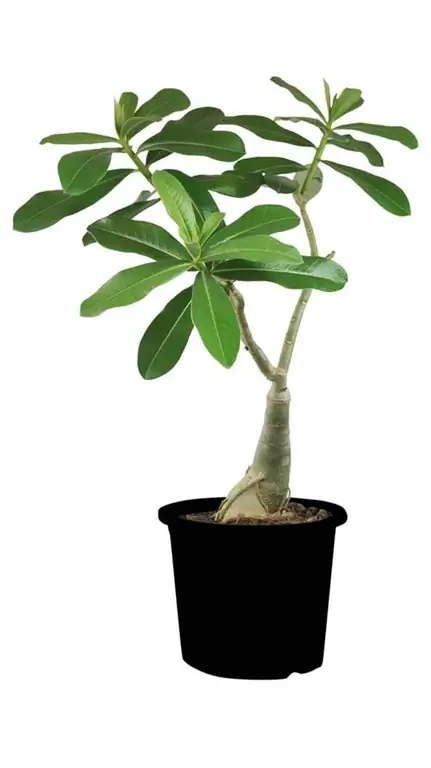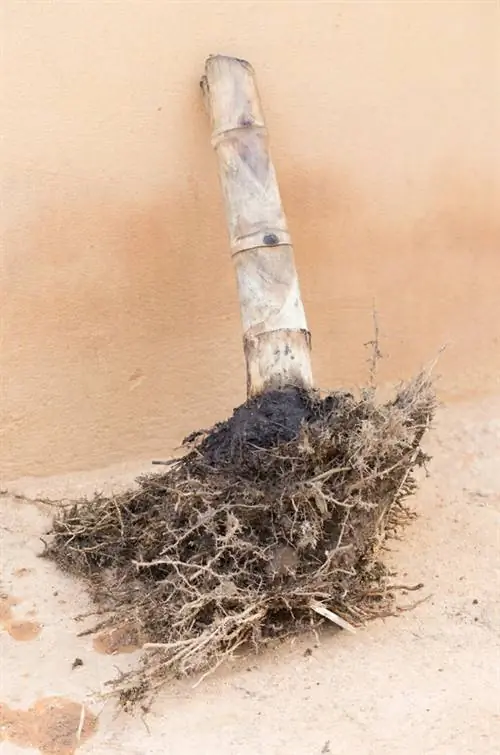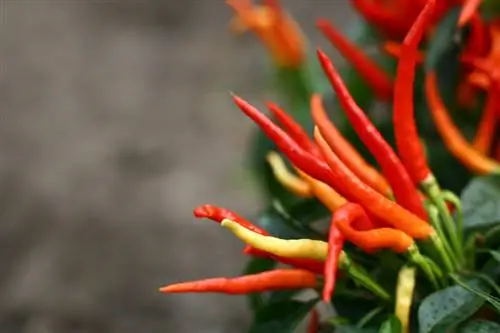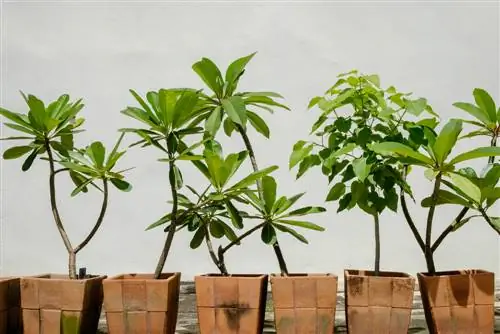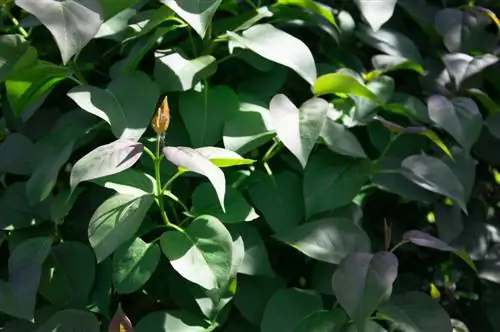- Author admin [email protected].
- Public 2023-12-16 16:46.
- Last modified 2025-01-23 11:21.
A frangipani or plumeria only looks truly decorative when it has branched well and formed a crown. Branching occurs naturally. If that takes too long for you, you can branch a plumeria artificially.
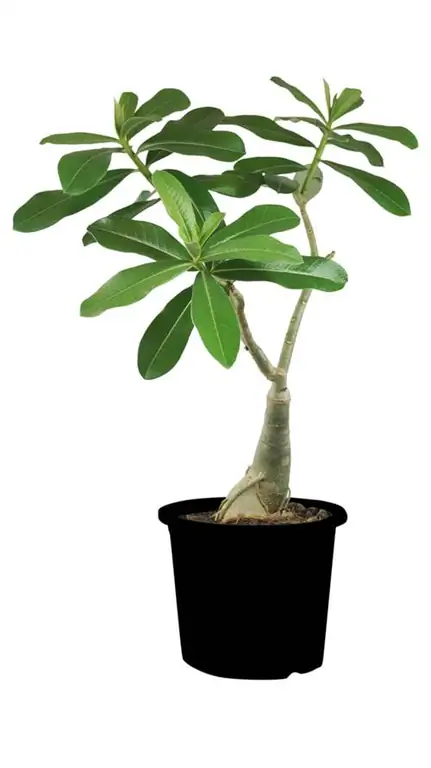
How can I branch a frangipani?
To artificially branch a frangipani, cut the main shoot straight. For natural branching, wait for flowers to appear and new shoots to grow. In spring you can shorten shoot tips to promote greater branching.
Make frangipani branch naturally
The frangipani does not branch naturally until it blooms for the first time. Only when a flower has formed will one to five new shoots emerge at the same time. The flower shoot itself stops growing.
Many gardening experts recommend simply giving the frangipani time to branch naturally. The result looks more aesthetic and the plant is not stressed.
How to artificially branch a plumeria
If it takes too long for the frangipani to branch on its own, cut off the main shoot. Use a sharp and clean knife to avoid spreading diseases from other plants. The cut must be made as straight as possible.
If the plumeria has already developed new shoots, shorten the shoot tips in spring if you want to branch out the houseplant even further.
The length of the sections doesn't matter if you don't plan to propagate the frangipani. If you would like to grow more offshoots, you must cut off sufficiently long shoots.
Using sections to propagate frangipani
- Cut cuttings 25 cm long
- Let the interface dry
- Let cuttings root in a water glass or seed pot
- repot later
Cut the offshoots in spring if possible. They need lots of light and warmth. You can only use the knife later if you can offer a good location with sufficient brightness even in winter.
The interface of the cutting must dry before you put it in the water glass or directly into potting soil. Otherwise the milky juice will run out and the shoot will die.
For the cutting to root, it must already be woody at the bottom. Therefore, cut it off in the lower gray area and not in the upper green area.
Tip
Frangipani is a dog poisonous plant and contains a poisonous milky sap. Therefore, wear gloves when cutting the shoot tips. If the milky juice comes into contact with bare skin, it can lead to inflammatory skin reactions.

